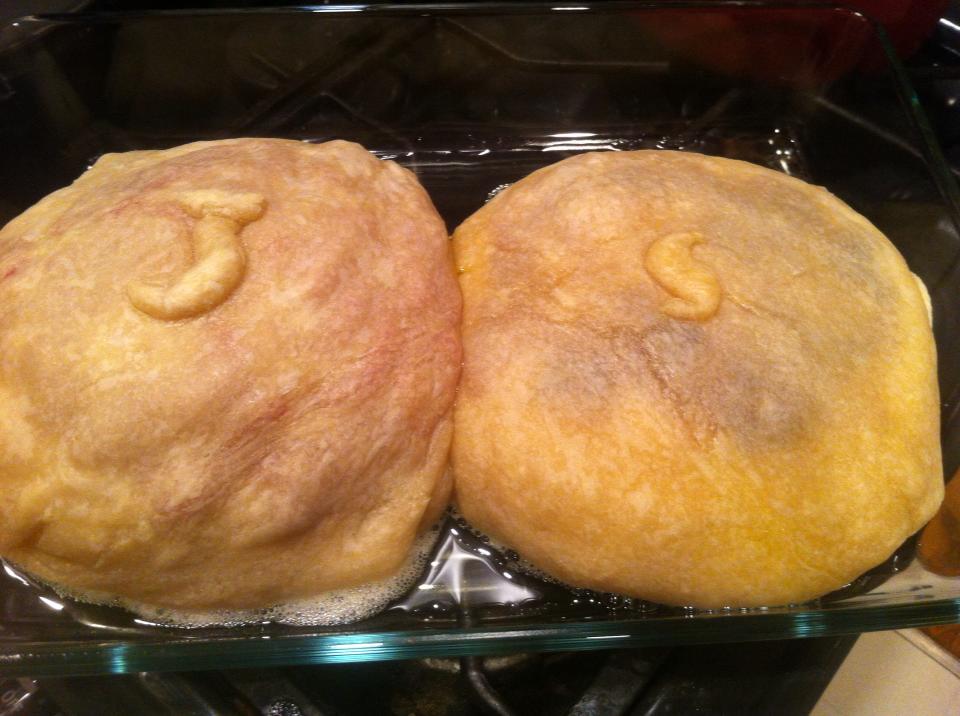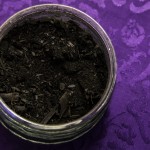For all those readers who took a crack at my two Sherlock ciphers and want to see the answers. I wrote a riddle to reveal what I’d be cooking for the season finale viewing party, and encrypted it two different ways. The plaintext was:
I’m covered up, but bubbling away inside. I’m seldom spicy, but a little hot to handle. And it’s hard not to be a little suspicious when there’s something a little foreign, or some would say rotten about me. (No, not Denmark). But most people like to indulge in me, except the exposed or intolerant (to lactose, that is).
Be seeing you.
I’ll pause and explain my two ciphers, to give you a moment to work out the riddle unspoiled.
The first block of ciphertext was a simple Caesar shift. This is a substitution cipher where every letter in the message is replaced by another letter. If I were to shift the alphabet by one place, A would become B, B would be C, etc. With the punctuation and spacing left in, a Caesar shift is pretty easy to break. You can just start by looking for single letters, which are almost certainly ‘a’ or ‘I’ and see whether either of those shifts decrypt the message. If I were meaner, I could have run the whole thing together with no spaces, but even then, Caesar shifts are very vulnerable to frequency attacks. The most common letter in the message probably maps to ‘e’ and, once you’ve tried unshifting according to that rule, you’ll probably find the plaintext quickly.
So, the second block of ciphertext was made using a slightly more complicated rule. There are 26 different Caesar shifts (A mapped to B, to C, etc, all the way back to A), and I could name them according to what A mapped to. So, a one-shift could also be named a B-shift. In the Vigenère cipher, the encrypter picks a keyword (mine was “HUDSON”) and the letters of the keyword tell you which Caesar shift to use, in what order. Thus, the first letter of my message was encrypted using the H-shift (the Caesar shift that maps A to H), the second letter was coded according to the U shift, and so on and so forth. The sixth letter gets the N-shift, and when I run out of letters in the keyword, I just start again, so the seventh letter goes according to the H-shift again.
This is much harder to break, since frequency analysis won’t turn up the ‘E’ this time. I tried to hint with the mention ‘vinegar,’ and the use of a Caesar shift in part one, which cipher I’d be using, so all you’d have to do is guess and test various keywords. Ultimately, all the people who broke the second cipher did so by reverse engineering my methods after getting the plaintext from challenge number one. (One of the decrypters was my former gentleman caller, who is no longer calling on me in that role, but remains a friend).
And you’ve had plenty of time to work on the riddle by now, so here’s the reveal:

I made my guests riddle a little longer, while I set up the A/V. I told them that John’s brie was very sweet and visibly patriotic and that Sherlock’s filling had a bit of a harsh, upsetting reputation, but was also quite sweet when treated correctly. The answers are:
John: Serfu enfcoreevrf naq oyhroreevrf
Sherlock: Pnenzryvmrq bavbaf
And there was much rejoicing. The third season is not my favorite season, but it had many wonderful moments, and picked up considerably after the not-so-perfect first episode. If you’re watching in the U.S., the season starts this weekend. If you’ve seen it already, feel free to discuss in the comments, but rot13 your remarks.
And everyone might enjoy this analysis of “The Empty House”, the story in which Doyle originally returned life to his detective.












